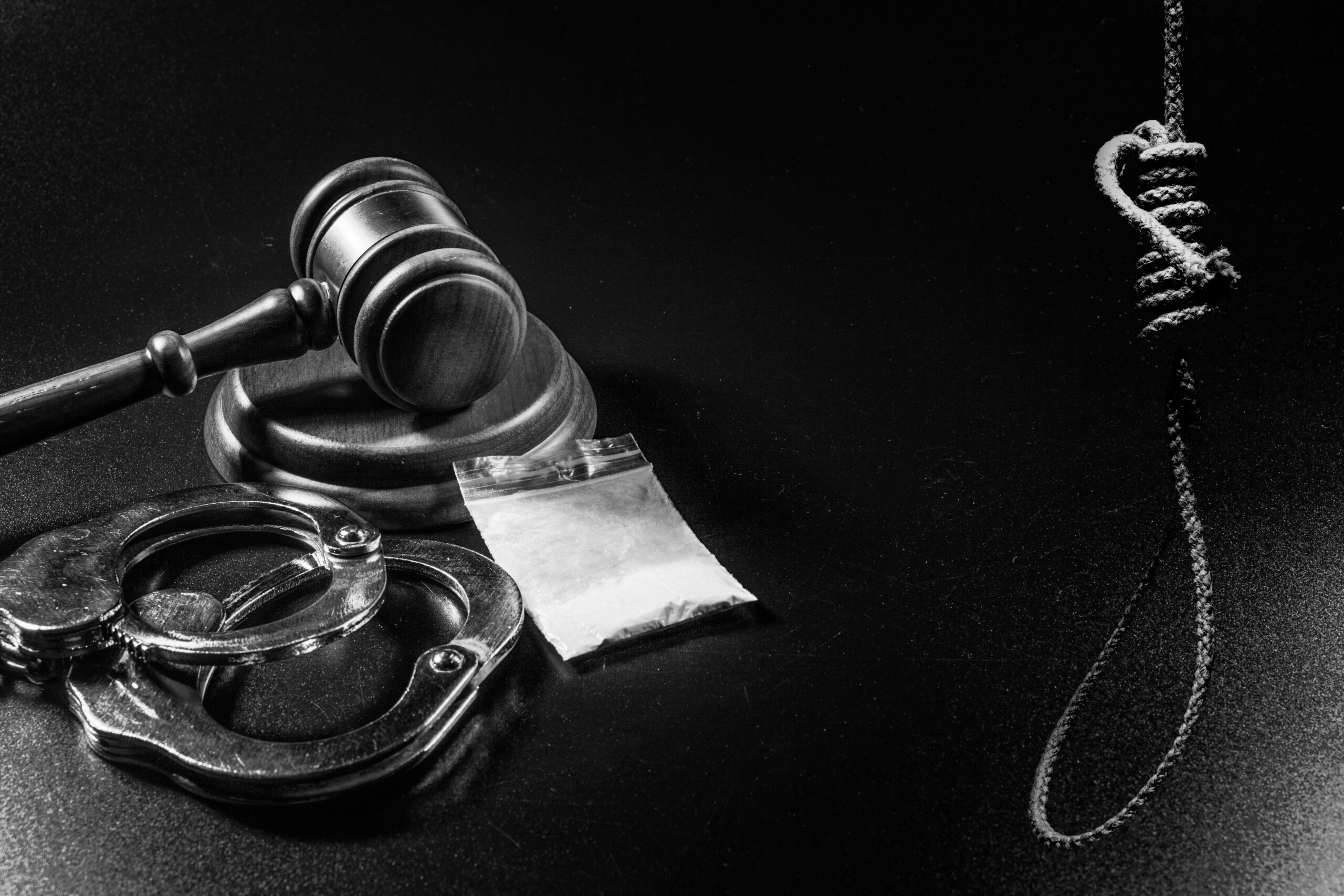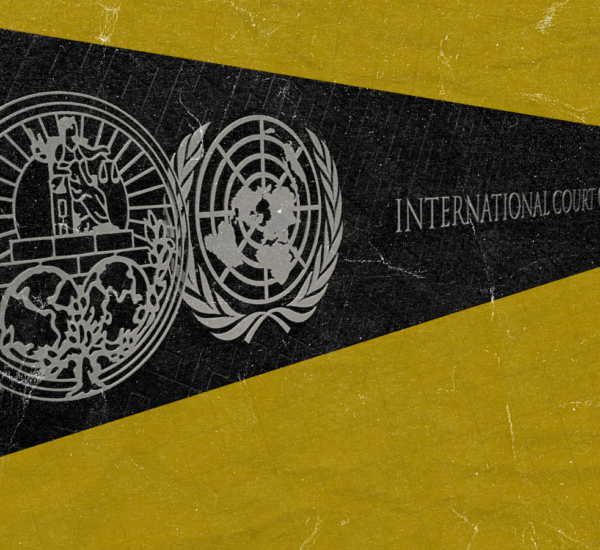
Snehal Dhote
Introduction
Last year (in April 2022), a 34-year-old Nagaenthran K. Dharmalingam was executed by the Singapore government. He was convicted on the charge of trafficking 42 grams of heroin from Malaysia to Singapore in 2009. The Court of Appeal rejected Nagaenthran’s appeal of suffering from an “abnormality of mind”. This article examines the Dharmalingam case along with the issue of prosecutorial discretion that lies at the heart of a wider critique of section 33B of the Misuse of Drugs (Amendment) Act 2012 that has made the mandatory death penalty discretionary for persons convicted for being ‘couriers’ in drug trafficking cases in Singapore. It argues that the provision is both procedurally and substantively arbitrary, and creates a misleading sense of individualised sentencing for drug trafficking in Singapore.
Changes to the Misuse of Drugs Act 1973
Under section 5(2) of the Misuse of Drugs Act 1973 (MDA), any person who is found in possession of a certain quantity of drugs is presumed to be a drug trafficker. While possessing as little as 10 grams of heroin attracts the maximum punishment of 30 years in prison along with the 15 stokes of caning, the law imposes a mandatory death penalty upon anyone who possesses more than 15 grams of heroin. For cannabis, 500 grams attracts the mandatory death penalty whereas, for cocaine, the limit is 30 grams. Further, section 7 makes the import or export of a controlled drug, an offence under the MDA.
In 2012, section 33B introduced an element of discretion in the mandatory imposition of the death penalty for anyone who is found in possession of the aforementioned quantities of drugs. While introducing the amendment in 2012, the Deputy Prime Minister and Minister for Home Affairs noted that drug trafficking syndicates had changed the ways in which they operate. Leaders manage affairs remotely while exploiting vulnerable people to work on the ground. As a result, the provision was inserted to target the higher-up and to dismantle syndicates by seeking information about them from mules. While the Singaporean Government claims to have inserted section 33B to keep up with the times and promote individualised sentencing, in reality, the amendment was the result of the widespread protests against the mandatory death imposed on Yong Vui Kong [04:31 – 06:48]. An 18-year-old Malaysian who offended after coming under the influence of a gang, educated himself in prison and became a devout Buddhist, Vui Kong’s mandatory sentence was commuted to life on the retrospective application of section 33B.
The provision titled ‘discretion of court not to impose a sentence of death in certain circumstances,’ gives the judge a chance to commute the mandatory sentence of the death penalty to that of life imprisonment, if either of the following conditions is satisfied:
First, under section 33B(2)(a) it is proved on the balance of probabilities that the person convicted was a mere courier AND under section 33B(2)(b) has successfully acquired a certificate of substantive assistance from the Public Prosecutor that they “substantially assisted the Central Narcotics Bureau in disrupting drug trafficking activities within or outside Singapore.” Under section 33B(4), it is the sole discretion of the Public Prosecutor to issue a certificate of substantive assistance. Their decision cannot be challenged unless bad faith or malice is proven.
Second, under section 33B(3)(a) it is proved on the balance of probabilities that the person convicted was a mere courier AND was suffering from an “abnormality of mind” that caused substantial impairment of their mental responsibility for the commission/omission of the offence.
A law that Started off on the Wrong Foot
Singapore introduced the mandatory death penalty for drug trafficking in 1975 after evincing that drugs are a ‘threat’ and a part of a larger “communist plan” to “corrupt and soften” people from South Asia. The State began justifying harsh punitive measures and “zero-tolerance” policies, also as Asian values necessary to protect families from “most serious crimes” i.e. drugs. Singapore has always portrayed itself as being pure and crime-free where the war against drugs is in the best interest of society. These blanket assertions are generally coupled with public opinion surveys conducted by the government to promote the public’s faith in the death penalty as being a deterrent. The Ministry of Home Affairs is known to regularly commission such surveys that find more than 70-80% support for the death penalty for “most serious crimes” like drug offences. These surveys have a dubious methodology and are designed to ask contrived and suggestive questions which are geared towards depicting an inflated image of public support and skewing the outcome in favour of the state policy.
Late Prof. Roger Hood has noted the problems with public opinion surveys and criticised their methodology in retentionist states. A 2018 study in Singapore based on Prof. Hood’s methodology found that 86.9% of people who generally supported the death penalty changed their responses when they were given factual circumstances, like a woman carrying a suitcase for a man as a favour. In this case, the support for the death penalty was drastically reduced to 16.7%. This shows that public opinion on the death penalty in general and its deterrent effect is high when generally asked, however, once the public is made known of the circumstances in which it is imposed, the support reduces. Public opinion surveys are an unreliable basis for dealing with law and policy issues such as the mandatory death penalty for drug trafficking which has multiple layers to it. Yet, time and again, the Government has relied on public opinion surveys to argue for the retention of the death penalty as well as to enact laws that make its imposition easier.
Excessive Discretion to the Public Prosecutor for issuance of a Certificate of Substantial Assistance
Section 33B(2)(b) confers wide discretion to the Public Prosecutor for deciding the outcome of the case. While it is true that the Public Prosecutor is an officer of the court and is an independent authority, the absence of any uniform procedure to issue a certificate raises questions about due process. The annexed explanatory statement to the 2012 Amendment MDA Bill stated that “substantive assistance” may include providing any information that could lead to the arrest, detention or prosecution of any person for an activity related to drug trafficking. It means only that information which is useful for the purpose of “effective enforcement of the provision.”
It is clear from a reading of the explanatory statement accompanying the 2012 Amendment (page 44), and additionally, reliance on Parliamentary Debates, that the aim of this provision is to extract self-incriminatory information from the accused. The court has acknowledged that a certificate of substantial assistance relates to the disclosure of confidential information and evidence that would not have been normally admissible. Unlike India and the United States, Singapore does not have a right against self-incrimination in its Constitution. The country has statutory privilege against self-incrimination enshrined in Section 22(2) of the Criminal Procedure Code however, the main focus of the provision is its investigative aspect – an accused must give all factual details of a case to the police during investigation, and during this the “privilege” against self-incrimination applies. This privilege is practically useless as after arrest, accused persons are not entitled to a lawyer and investigation only happens in the presence of the police. Thus, accused persons are generally not aware of the privilege and are prone to share self-incriminatory information.
However, there is also no certainty that every instance of self-incrimination would guarantee the accused a certificate of substantial assistance. The determination entirely depends on the Public Prosecutor and they are not obliged to provide reasons for their determination. In cases with multiple accused persons, one accused has received a certificate from the Public Prosecutor whereas, the co-accused has not, despite the similarity in facts and the role of the accused persons. In another case, despite the accused being cooperative and providing information, he was not given a certificate because it was not new or useful information.
Thus, the manner in which the Public Prosecutor determines who receives a certificate and who does not is unpredictable, arbitrary and opaque. Further, the discretion exercised by the Public Prosecutor is presumed to be fair. It is upon the accused to lead evidence to show that the determination of issuing or not issuing a certificate was done maliciously, thus making it almost impossible to challenge the determination.
To make things worse, even if the conditions under section 33B(2) are met, i.e., it is proved that the convicted person is a courier and has received a certificate of substantial assistance from the Public Prosecutor, commutation is not mandatory and judge’s discretion as per section 33B(1)(b) creeps in to protect the accused from the death penalty.
Understanding the Problematic “Abnormality of Mind” Exception through Nagaenthran K. Dharmalingam’s Case
In Nagaenthran’s case, despite a record showing an intellectual disability and having an IQ of 69, was executed by the Singapore government in April 2022. The Court of Appeal inimically interpret the exception and failed to acknowledge Nagaenthran’s intellectual disabilities.
The Court stated that the “abnormality of mind” exception has three limbs to it. First, the appellant has to show that they are suffering from an “abnormality of mind”. Second, such an abnormality is the result of arrested development of the mind, an inherent cause or was because of injury or disease. Third, If the first two limbs are satisfied, then the appellant has to prove that their mental responsibility for the acts in question has been “substantially impaired” due to the “abnormality of mind”.
It was held that while the first and the third limb are to be decided by a judge as a matter of fact, the second limb should be a medical inquiry and will be ascertained through expert evidence. Whether or not a person has an “abnormality of mind” was to be ascertained considering the person’s capacity to understand the act, its rightness or wrongness, and exercise self-control. Further, the Court referred to Parliamentary Debates and noted that the legislative intent of the provision was only to exclude genuine cases of mental disability and to exclude “errors of judgement”. Finally, the Court held that Nagaenthran’s mental responsibility was not impaired because, through the trial, he gave different reasons for the commission of the offence. It was observed that initially, Nagaenthran claimed that he knew the contents of the packet he was trafficking but later he claimed to not know the contents. When asked why he committed the offence, the court observed his responses ranged from being under the fear and coercion of the “King”, having a sense of loyalty, being under the threat of his girlfriend getting killed to needing money. The Court held that if they assume that the first two limbs are satisfied, due to “vastly different and irreconcilable accounts of why he had committed the offence,” the third limb is not satisfied.
The exception of “abnormality of mind,” which is similar to the “unsoundness of mind” exception in India, finds its roots a century back. The medical concept does not have an accurate definition and became popular at a time when advanced concepts like mental illness were unwonted. As a result, it was thought that making a judicial inquiry into the “abnormality of mind” was much easier than doing a medical one. However, today, while medical sciences have rapidly progressed, the determination of “abnormality of mind” is still a legal exercise, leading to the first limb itself being imprecise. Emphasising on this incorrect determination, Court further held that past cases will not have precedential value as every factual inquiry of the “abnormality of mind” by the judges will be different.
With respect to the second limb, it has been made clear that the exception applies only to inherent abnormalities or the ones caused due to disease or injury. Again, relying on Parliamentary Debates, the Court reiterated that “self-induced illnesses” will not attract this exception. This narrow application of the exception is extremely prejudicial to persons who get into drug-related crimes due to addiction. 17% of people arrested for drug trafficking in 2021 were addicts themselves.
In Nagaenthran’s Case, the State had appointed three mental health experts. On the basis of their assessment, a report was presented to the Court. While the report stated that Nagaenthran did not suffer from any “abnormality of mind”, his internal rationality and the ability to assess risks for his actions were impaired because of his borderline intelligence and cognitive deficits. However, the Court discounted his plea and the doctor’s report due to the inconsistent facts he stated throughout the trial as the Court interpret the third limb on the basis of a capacities approach. The problem with this interpretation is that, while a person might be able to understand the legal elements necessary to commit the crime, them having an intellectual disability diminishes their culpability and is not merely an “error of judgement”. An intellectual disability affects a person’s ability to assess risk and form a judgement. Discounting attendant circumstances to imposing the death penalty on such a person highlights the ignorance of the criminal justice system regarding acknowledgement of intellectual disabilities, such as in the General Comment No. 36 of the International Covenant on Civil and Political Rights.
While the application of Section 33B(2)(a) has an element of double discretion, the mandatory application of Section 33B(1)(a) on the judge for commuting a death sentence on proving of “abnormality of mind” is as difficult.
Conclusion
The death penalty itself as a mode of state punishment is archaic and violates the right to life and right against torture. These is no conclusive proof that it is deterrent, however, it indubitably does not leave any scope for reformation. Expansion of the death penalty to drug offences is additionally problematic as drugs are not a law and order issue but a health issue.
While there have been few instances in Singapore where either of the two exceptions stipulated in Section 33B has been applied (here and here), overall, it is extremely difficult to get the benefit. The application of the exception is very inconsistent, thereby adversely impacting the rule of law for the accused persons in drug trafficking cases. The provision does not provide any penological goals or guidelines that the prosecutors and the courts are required to adhere to, making the imposition of the death penalty very arbitrary. The lack of transparency in the application of the provision, adds to its arbitrariness. On the basis of the above analysis, it is therefore concluded that the provision is only an illusion of individualised sentencing in Singapore due to its restrictive application and erratic implementation.
Snehal Dhote is an Associate (Sentencing) at Project 39A, National Law University, Delhi. The author would like to acknowledge the guidance provided by Neetika Vishwanath and Maitreyi Misra in the writing of this article.





